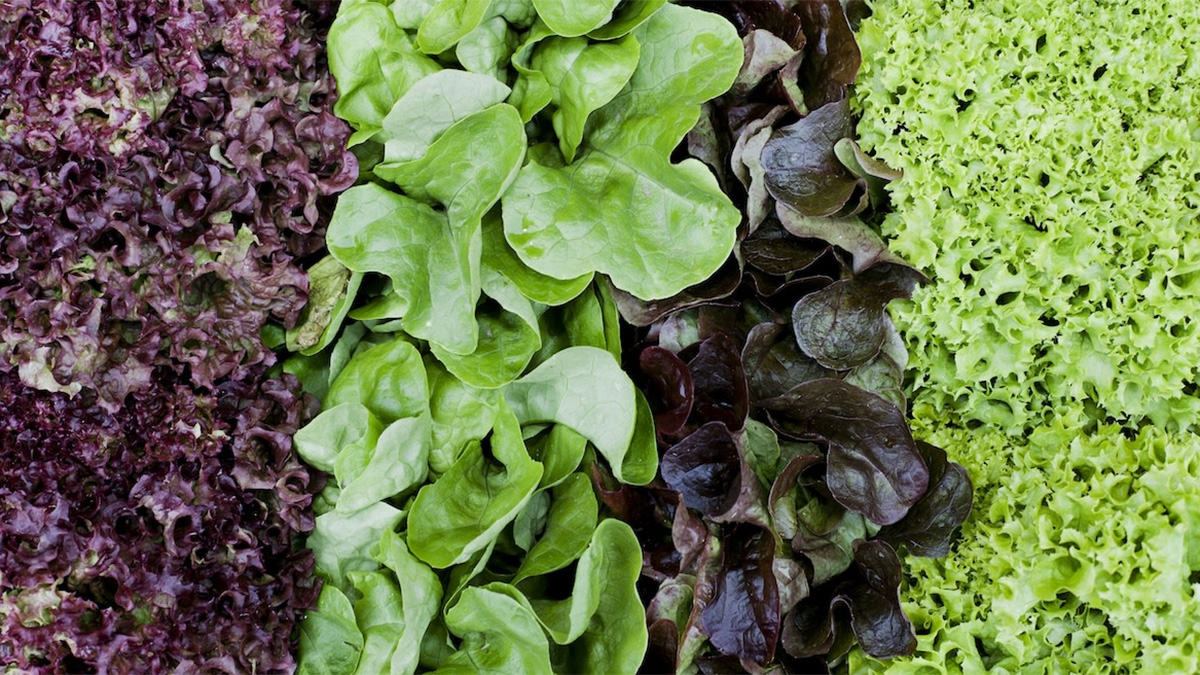Lettuce Varieties Every Home Gardener Should Consider Growing

Lettuce is one of the easiest and most rewarding crops for home gardeners, but choosing the right variety can make all the difference. From crisp romaine to tender butterhead and colorful loose-leaf types, there’s a lettuce for every taste and garden style. In this guide, you’ll discover the top varieties worth growing and how to pick the best ones for your space and climate.
Why variety selection matters
Choosing the right lettuce variety can make a big difference in your garden’s success. Some types grow faster, handle heat better, or offer a more distinct texture and flavor. Understanding these differences helps you plan for both taste and performance.
Loose-leaf lettuces are quick to harvest and easy for beginners, while head-forming types like romaine and crisphead take more time and space. Some varieties resist bolting in warm weather, which is especially helpful in southern regions. By mixing types, you can enjoy a longer harvest and a more diverse salad bowl.
Butterhead lettuce (e.g. Bibb, Boston)
Butterhead lettuce is known for its soft, loosely formed heads and smooth, tender leaves. These varieties have a mild, slightly sweet flavor that works well in salads, sandwiches, and wraps. They’re ideal for spring and fall planting, thriving in cooler temperatures.
Bibb and Boston are among the most popular types, producing compact heads that don’t take up much space. Butterhead lettuce prefers rich soil and consistent moisture for best results. It’s a great choice if you’re looking for a lettuce that feels delicate but grows reliably.
Romaine lettuce (e.g. Parris Island Cos, Little Gem)
Romaine, or cos lettuce, forms tall, upright heads with firm, crunchy leaves. Its robust flavor and satisfying texture make it a staple in Caesar salads and ideal for grilling or layering in sandwiches. Romaine grows well in full sun and can tolerate more heat than many other types.
Parris Island Cos is a dependable heirloom variety with disease resistance and excellent flavor. Little Gem is a smaller romaine perfect for tight spaces or interplanting with other greens. Give romaine about 10 to 12 inches of spacing for full head development.
Loose-leaf lettuce (e.g. Red Sails, Black Seeded Simpson)
Loose-leaf varieties are among the easiest lettuces to grow and harvest. These lettuces do not form heads but instead produce clusters of tender leaves that can be harvested a few at a time. This makes them perfect for cut-and-come-again gardening.
Red Sails offers deep red, frilly leaves with a mild flavor and strong bolt resistance. Black Seeded Simpson is a longtime favorite for its quick growth and dependable performance. With loose-leaf types, you can plant in rows or scatter seeds for a dense, leafy bed.
Crisphead lettuce (e.g. Iceberg, Great Lakes)
Crisphead lettuce forms tightly packed, crunchy heads that are pale green inside with a mild flavor. Iceberg is the most well-known type, often used in wedge salads and for its fresh crunch in burgers and sandwiches. While popular, it can be more challenging to grow than other varieties.
Crisphead lettuce needs a longer growing season and cooler temperatures to form full heads. It is prone to bolting in warm weather, so plant early in spring or late in summer for a fall crop. Keep the soil consistently moist and space plants widely to reduce disease risk.
Oakleaf lettuce (e.g. Green Oakleaf, Red Oakleaf)
Oakleaf lettuce is named for its uniquely shaped leaves, which resemble those of an oak tree. These leaves are tender and slightly nutty in flavor, making them a beautiful and tasty addition to any salad. Oakleaf types tend to grow quickly and are especially suited to cooler months.
Green Oakleaf has bright green foliage with a smooth texture, while Red Oakleaf brings in beautiful burgundy tones. Both are loose-leaf types, meaning you can harvest leaf by leaf or take full plants as needed. They also add visual interest to mixed plantings.
Batavian lettuce (e.g. Nevada, Sierra)
Batavian, also called summer crisp lettuce, is a hybrid between crisphead and loose-leaf types. It offers the crunch of iceberg with the growing ease of leaf lettuce. These varieties hold up well in the heat, making them a great choice for midsummer harvesting.
Nevada is a standout Batavian with resistance to bolting and a sweet flavor. Sierra has red-tinted leaves and performs well in both spring and summer. Batavian types often have good storage life, which makes them useful if you’re growing lettuce for longer-lasting harvests.
How to choose the right varieties for your garden
Start by considering your climate. If you live in a warm region, look for bolt-resistant or heat-tolerant varieties like Batavian or romaine. Cooler climates can support butterhead, oakleaf, and crisphead types throughout the growing season.
Think about how much space you have and whether you prefer to harvest gradually or all at once. Loose-leaf varieties are perfect for small gardens and frequent harvests. If you’re planning a one-time harvest, go for head-forming lettuces like romaine or crisphead.
A mix of types is often the best choice, giving you a range of textures and harvest windows. You can also try variety seed packs to explore new favorites and expand your options. Planting different types also adds diversity to your garden beds.
Where to buy quality lettuce seeds
Lettuce seeds are available from most online seed catalogs, garden centers, and even local hardware stores. Look for reputable sources like Johnny’s Selected Seeds, Baker Creek, or Territorial Seed Company. These suppliers offer both heirloom and hybrid selections.
Heirloom seeds are open-pollinated and good for seed saving, while hybrids often provide improved disease resistance or uniform growth. Choose certified organic seeds if you’re avoiding synthetic treatments. Always check the packet for days to maturity and any regional growing notes.
Buying from regional suppliers can also give you better-adapted varieties. Seed catalogs often include helpful information on ideal planting times and germination conditions. Store unused seeds in a cool, dry place to extend their viability.
Tips for growing multiple lettuce types together
Lettuce varieties can be interplanted in rows, clusters, or decorative patterns for a more vibrant and productive bed. Just make sure to group varieties with similar growth rates and spacing needs. Stagger planting dates every couple of weeks to extend your harvest season.
Mixing leaf shapes and colors adds interest and helps with visual identification during harvest. If planting head-forming types, allow more room for the heads to develop fully. Combine upright types like romaine with low-growing loose-leaf varieties to maximize space.
Keep soil evenly moist and use light mulch to prevent drying out. Rotate lettuce beds to avoid disease buildup and plant in rich, well-drained soil for best results. A little planning goes a long way when managing multiple varieties in the same space.
Frequently asked questions
Can I mix lettuce varieties in one bed?
Yes, and it’s actually encouraged. Mixing varieties lets you enjoy different flavors, textures, and growth patterns in the same garden space. Just be sure to match spacing and harvest timelines.
Which lettuce grows best in hot climates?
Batavian and romaine types tend to hold up best in heat. Look for varieties labeled as bolt-resistant or suitable for summer planting. Shade cloth can also help during the hottest part of the day.
What’s the fastest-growing type of lettuce?
Loose-leaf varieties like Black Seeded Simpson and Red Sails grow very quickly, often ready to harvest in as little as 30 days. They’re perfect for quick turnarounds and succession planting.
Are red lettuces more nutritious than green?
Red lettuces often contain more antioxidants like anthocyanins, but both red and green varieties are nutritious. Growing a mix gives you a broader range of nutrients and flavors.
Conclusion
With so many lettuce varieties to choose from, your garden can offer both beauty and flavor throughout the growing season. Whether you prefer delicate leaves, crunchy heads, or colorful blends, there’s a variety that fits your needs. Try a mix of types this season and enjoy fresh, homegrown lettuce straight from your backyard.
